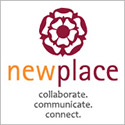
Once upon a time, Annual Reports were the envy of nonprofits. Corporations and “big businesses” produced glossy, four-color, photo-laden publications with very official “financials” touting auditors’ endorsement in the back. It seemed an impossible dream for many nonprofits. Then, one day, someone (we are not sure who) invented a web of words and images called the Internet. And printing morphed to include more pathways than messages on paper. And nonprofits rejoiced.
But some nonprofits lacked storytellers to capture the tales of good works, funds raised, and lives changed. And there was confusion in the land of nonprofits about whether an “annual report” was too, well, corporate.
Then the storytellers stepped from the shadows and those whose lives have been changed moved into the light to tell their own stories on the “book of faces” and in 140-character notices. Like messages in bottles, testimonials and profiles floated their way into a new kind of annual report for nonprofits—a report about how even the smallest of these organizations makes a difference.
—————————————————————
Today, the new nonprofit annual report can find a home on an organization’s web site, may be printed on demand, or might even be a video living on YouTube. Here are six questions you may ask to determine what KIND of annual report your organization needs—if, indeed, you need one at all. Apply the “rule of three” and list at least three responses/concepts for each question.
Then look for Part Two of this post with ideas on how you can generate an affordable, effective annual report.
1. Consider your constituents’ behavior
How does your audience best receive and respond to information? Do your constituents rely on e-mail, visit your website, live on Facebook, and/or tweet constantly? Do your donors mostly respond to postal mail? Is there an innovative means by which to provide an annual report that speaks to and informs your donors and friend in a way that engages them where they are online OR otherwise? How many of your constituents are “print only” readers?
2. Review your resources
Do you have the means—budget, web site, social media, e-list—through which to both reach AND engage your key audiences? What are your resources for an annual report project? What content exists or can be most easily compiled/adapted to meet your needs?
3. And what is the PURPOSE of your annual report?
The answer is not “because everyone is doing annual reports.” If you have not produced an annual report previously, be sure it’s worth your time and energy to add this to your mix. On the other hand, if you can associate a measurable result with production of a digital and/or print annual report, then you should consider the why and how of this project. What do you hope to achieve through this project?
4. What scope is needed to tell your most import story or stories?
5. How will you get from “concept” to final project?
Do we have the resources? Who will write and edit your report? Organizations without a dedicated communications or development professional may be hard pressed to produce a report.
6. How can your digital presence support this project?
To be continued… You’ll find helpful links and tips in Part Two.
Yvonne Hudson, principal of New Place Collaborations in Pittsburgh, loves creating mission-driven solutions for nonprofit clients. She enjoys the challenge capturing one year in words and images in an annual report, such the Mission Vision report at the link provided in Part Two of this series.












